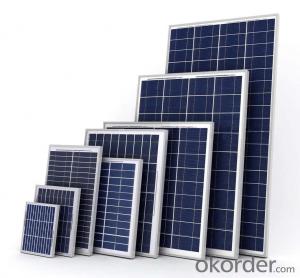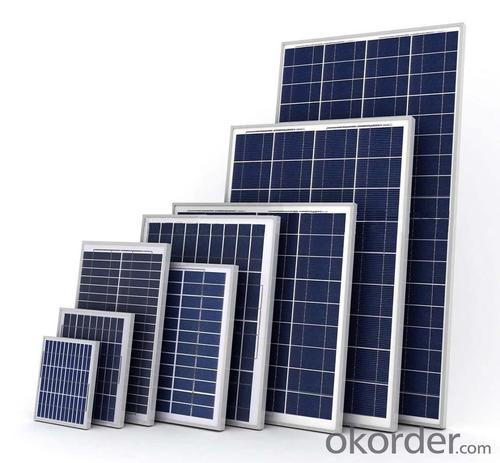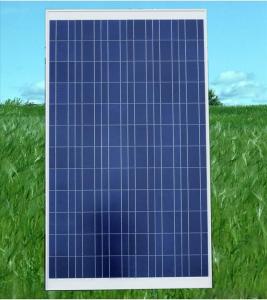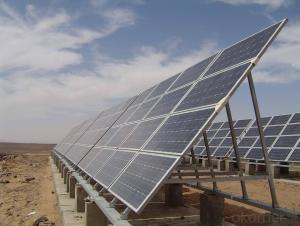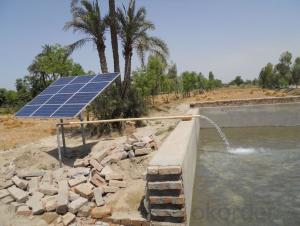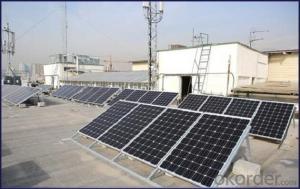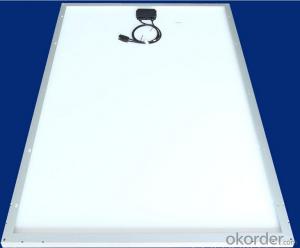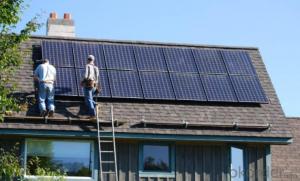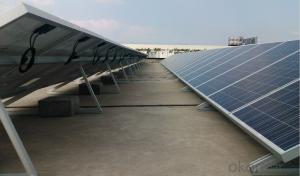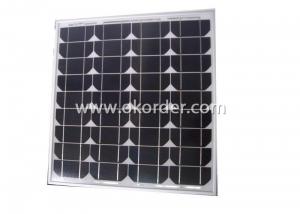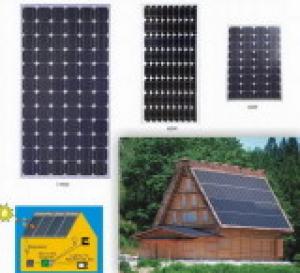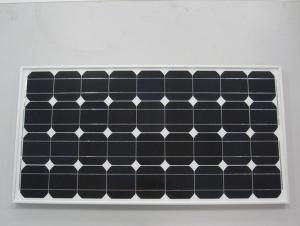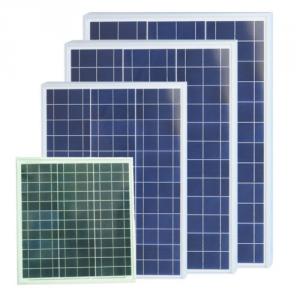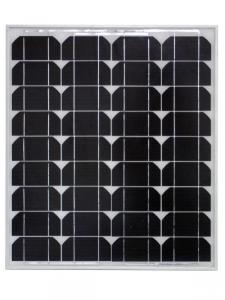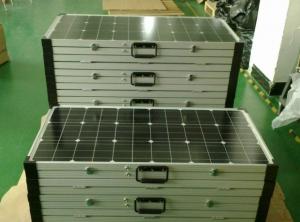Pallet Solar Panels - CE and TUV Approved High Efficiency 40W Poly Solar Panel
- Loading Port:
- Shanghai
- Payment Terms:
- TT OR LC
- Min Order Qty:
- 10000 watt
- Supply Capability:
- 20000000 watt/month
OKorder Service Pledge
OKorder Financial Service
You Might Also Like
Specification
Product Description:
1.Structure of Polycrystalline Silicon Solar Panel
I. High efficiency crystalline silicon solar cell. Even if under the weak light, the solar module can produce maximum power output.
II. Tempered glass (toughened glass): Anti-reflecting coating and high transmission rate glass increase the power output and mechanical strength of solar module.
III. EVA and TPT: Using high quality EVA and TPT to prevent destroying and water.
IV. AI frame: Without screw, rner connection. 6 holes on the frame can be installed easily.
V. Junction box: Multi function junction box with water proof.
VI. Long lifetime: ≥25 years; Less power decrease.
VII. Good performance of preventing from atrocious weather such as wind and hails.
VIII. Resisting moisture and etching effectively, not effected by geology.
IX. The certificate issued by international authority: UL, TUV, IEC, CE.
2.Characteristics
1)Manufactured according to international quality and Environment Management
System (ISO9001, ISO14001)
2)High efficiency crystalline silicon solar cells
3)High transmission Iow iron tempered glass, strong mechanical resistance
4)Anti-ageing EVA and excellent anti-climate back sheet
5)Anodized aluminum frame improves load resistance capabilities for heavy wind loads.
6)Standard waterproof junction box
7)High endurance to different weather
8)Good and friendly package with less transportation and storage space.
3.Warranty
1)10 years limited manufacturing warranty
2)10 years for 90% of warranted minimum power
3)25 years for 80% of warranted minimum power
4.The Pictures of Solar Panels
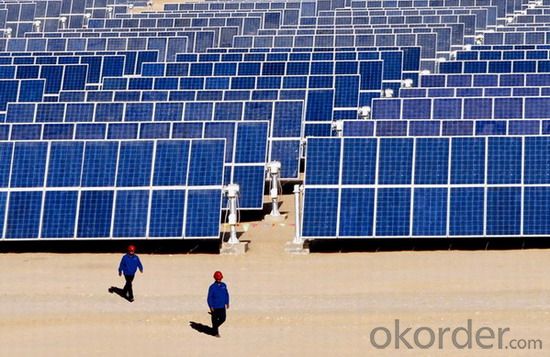
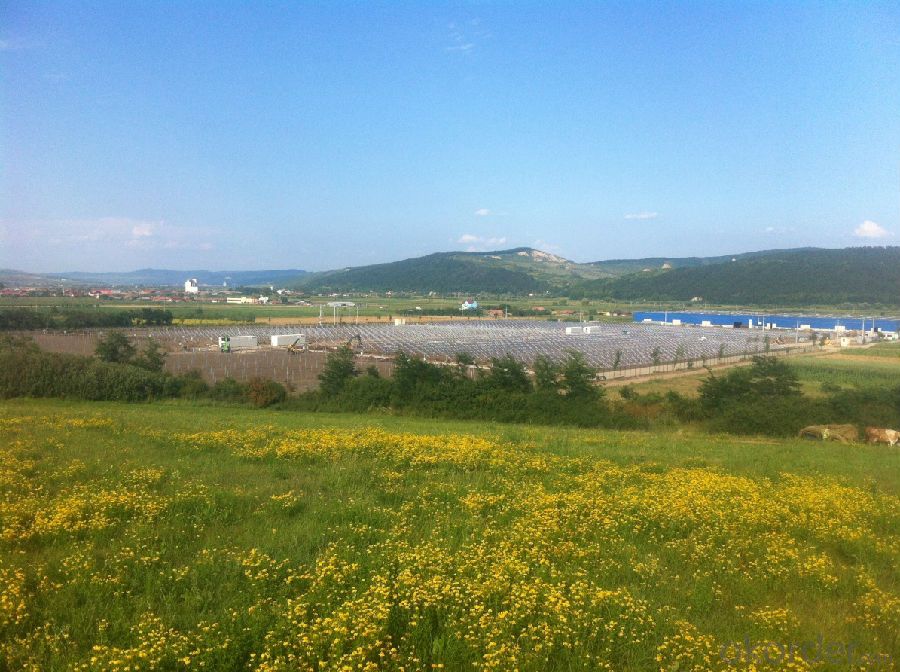
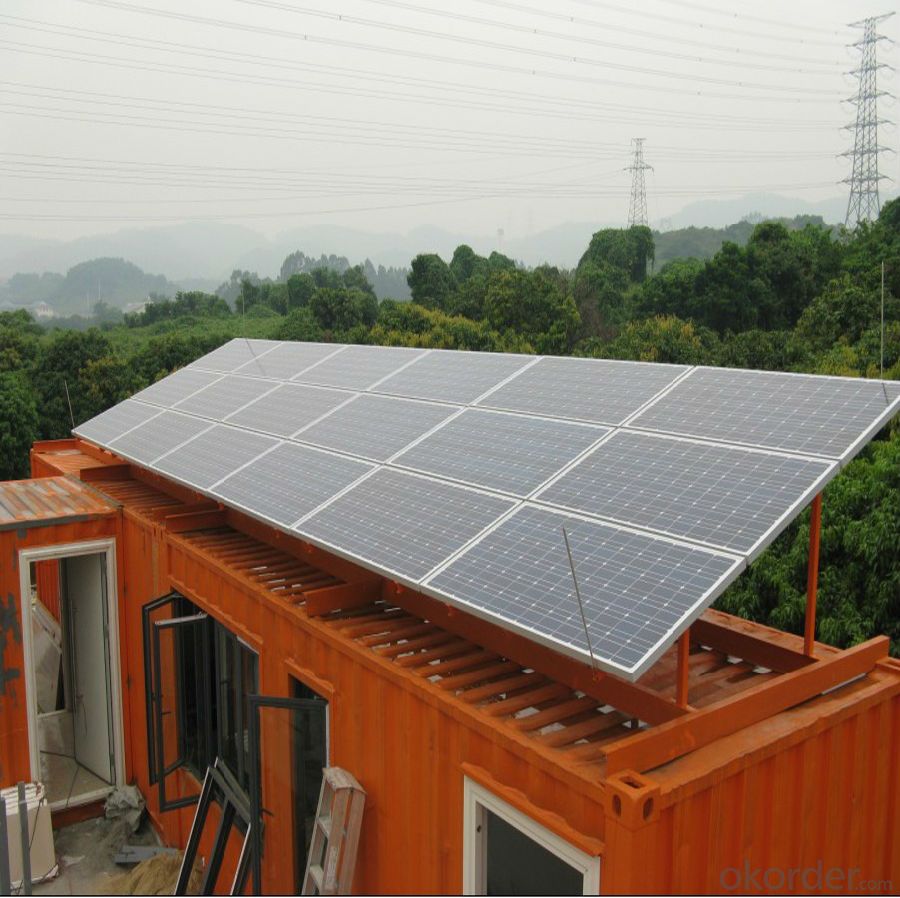
5. Production Flow
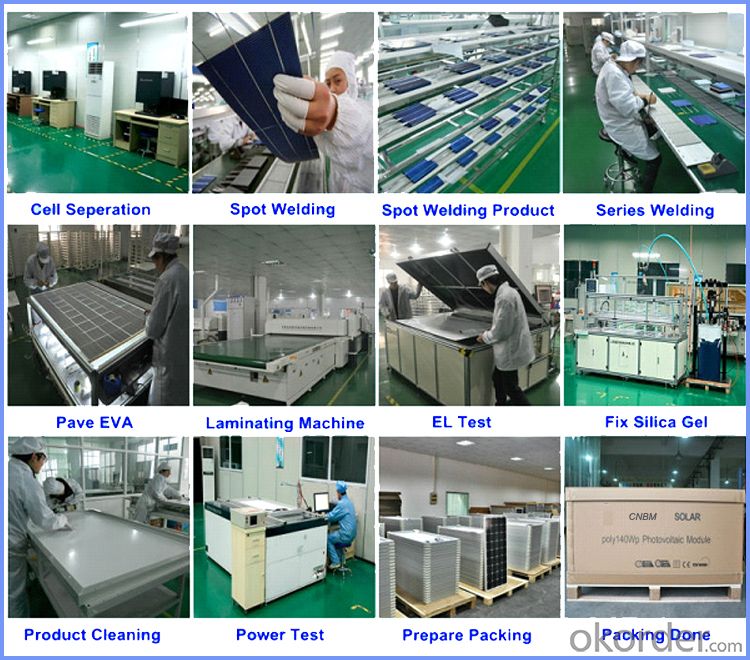
6. Packing Details
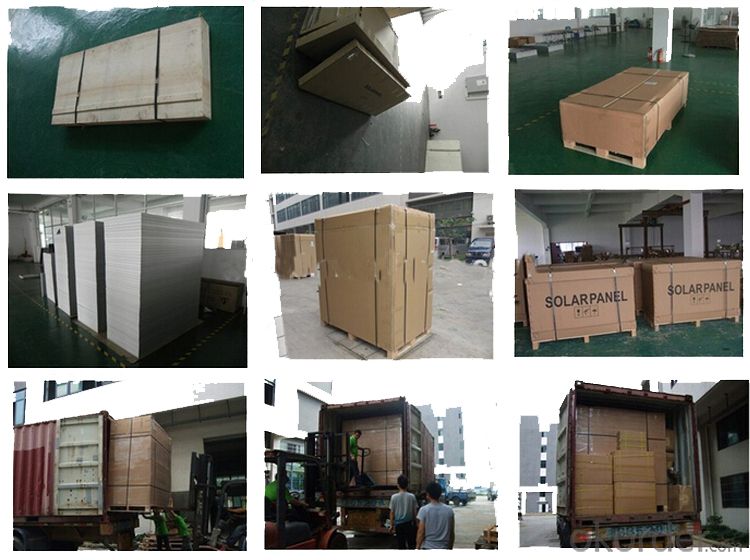
7. Use For
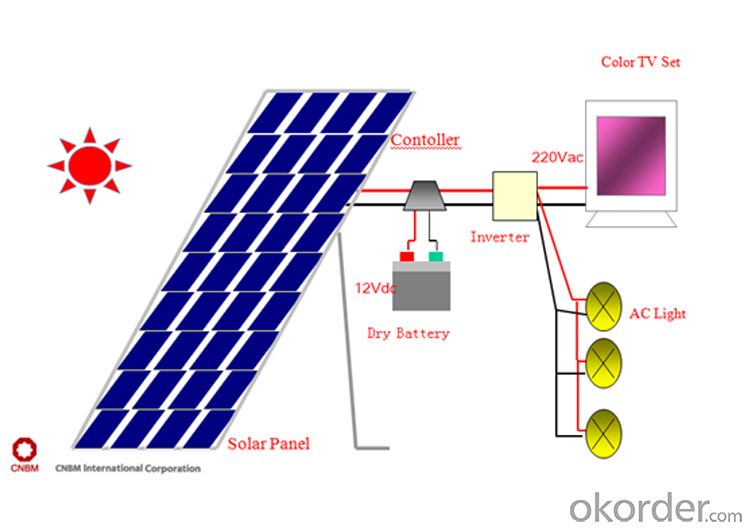
- Q: During the summer my house uses about .47 kw/h I am wondering what solar panel do I need to cover most or all the electric bill. A link would be helpful too :)
- Your okorder /.. A solar panel of 40-50 square meters should suffice, at least in summer when the sun is high in the sky. It's about 500 square feet, or about 20 times 25 feet.
- Q: What is the average size of a residential solar panel system?
- The average size of a residential solar panel system is typically around 5 kilowatts (kW), which is equivalent to approximately 20 solar panels. However, the size may vary depending on factors such as energy consumption, roof space, and individual preferences.
- Q: I am trying to built a circuit that will power two USB ports (both 5V and 0.5 amps) from the output of a solar panel that produces 20V at 0.2 amps. I have a voltage regulator that runs at 5v and 0.5 amps but I can't figure out the best way to boost the current up to 0.5 amps before I incorporate the voltage regulators.
- If you want to power both USB ports at the same times, It might not be possibble. Your solar panel only supplies 2.24 Watts (20V * 0.2A) of power and you need to deliver 2.5 Watts (5V * 0.5A) to the ports. Subtracting any losses from your regulator(s), you will be WAY over your power budget. You will need more of a solar panel or less of a load.
- Q: I want to build a solar panel
- Here okorder /
- Q: Do solar panels produce noise?
- No, solar panels do not produce noise as they do not have any moving parts.
- Q: Can solar panels be used in areas with high pollution levels?
- Yes, solar panels can be used in areas with high pollution levels. While pollution levels may slightly reduce the efficiency of solar panels due to decreased sunlight reaching the panels, they can still generate electricity. Additionally, solar panels can help mitigate pollution by providing clean and renewable energy, reducing reliance on fossil fuels and contributing to a cleaner environment.
- Q: Can someone explain to me how solar panels can be used as modern architectural attributes? please help
- You could check out building integrated photovoltaics (BIPV). BIPV includes things like solar roof tiles and smart energy glass that acts as a window and also creates electricity. BIPV is a great way for people to go solar without disrupting the modern architectural attributes of an existing structure.
- Q: Can solar panels be installed on a recreational vehicle (RV)?
- Yes, solar panels can be installed on a recreational vehicle (RV). Many RV owners choose to install solar panels on their vehicles to generate electricity and reduce their reliance on traditional power sources while on the road. Solar panels can provide a sustainable and eco-friendly solution for powering various appliances and systems in an RV, making it more self-sufficient and energy-efficient.
- Q: Can solar panels be installed on a church or religious building?
- Yes, solar panels can be installed on a church or religious building. In fact, many religious organizations have embraced renewable energy and installed solar panels to reduce their carbon footprint and lower their energy costs.
- Q: How efficient are the solar panels....?
- DS's solar panels convert 22% of their available energy into electrical power. This may not sound very good, but it is much better than most solar panels. Most solar panels on people's houses, for example, are fairly inefficient. Less than 4% of the energy that reaches them will be converted to electricity. DS's panels are so efficient, in fact, that unless the ion propulsion drive is running, DS is producing far more power than it needs.
Send your message to us
Pallet Solar Panels - CE and TUV Approved High Efficiency 40W Poly Solar Panel
- Loading Port:
- Shanghai
- Payment Terms:
- TT OR LC
- Min Order Qty:
- 10000 watt
- Supply Capability:
- 20000000 watt/month
OKorder Service Pledge
OKorder Financial Service
Similar products
Hot products
Hot Searches
Related keywords
